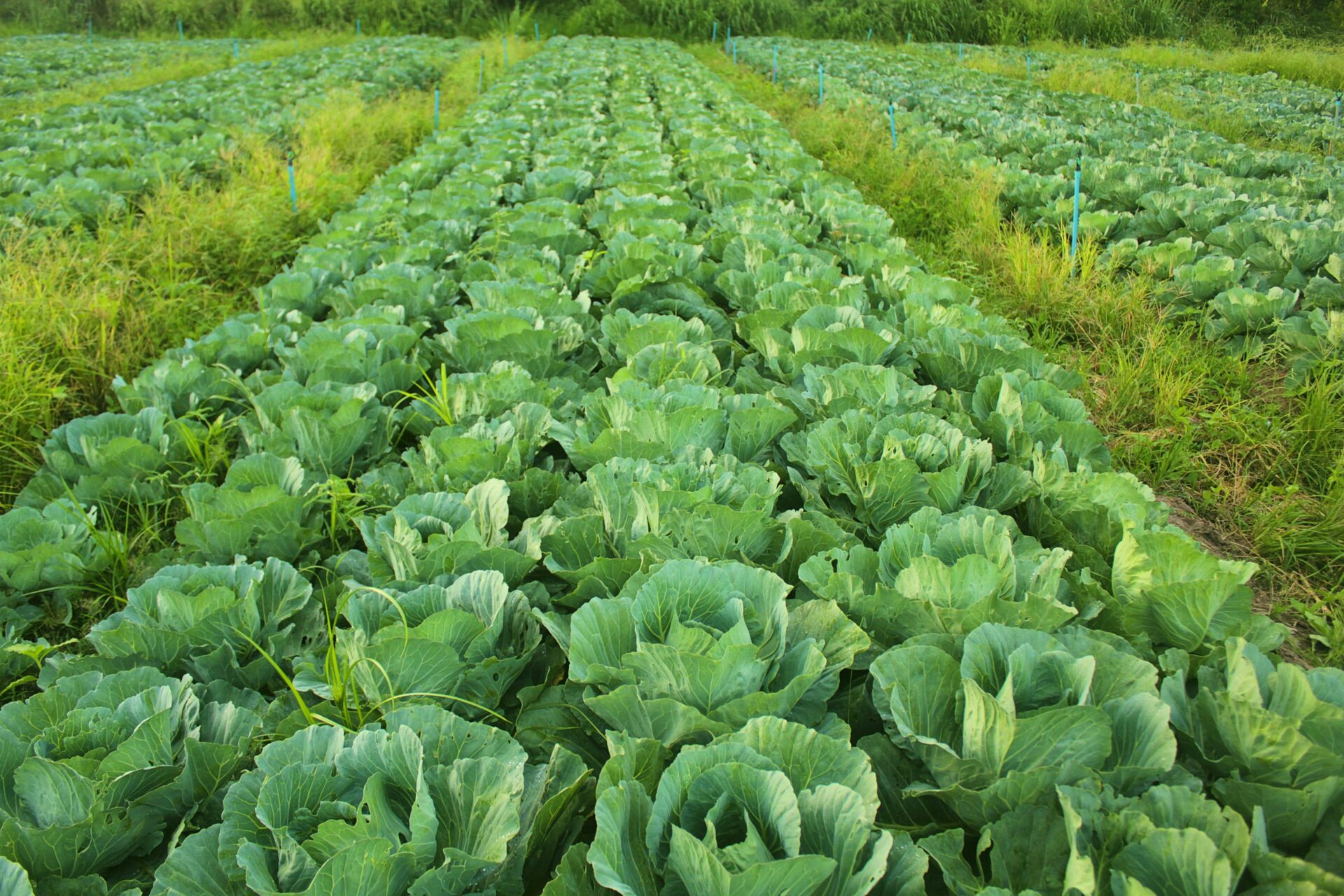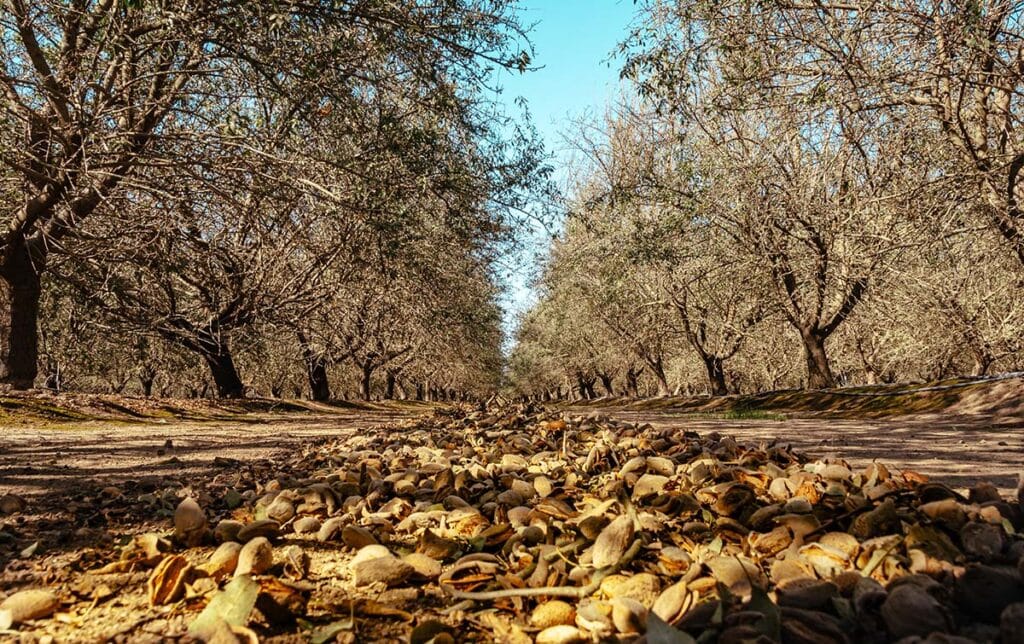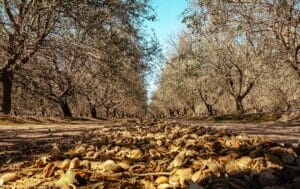Sep 11, 2025



Removing an orchard isn’t as simple as it once was. Nut farmers used to be able to burn old trees and plant new ones in the spring. Now, burning regulations are in place and can require expensive licenses and permits. Air regulations, like the 2002 Clean Air Act, and research on the negative impacts of burning has proven it to be an unsustainable tree crop residue management option.
In the past, growers could also sell wood chips to fuel-burning power plants. These plants are now shutting down across the US. While managing aging orchards may feel like a new expense in nut growers’ businesses, there is a way to remove old trees and gain a return on investment.
Whole-orchard recycling (WOR) research suggests chipping trees can be an investment in your next orchard. Maximize your investment by pairing WOR best practices with a carbon-rich microbial food, like PhycoTerra, to access nutrients in wood chips sooner, and support long-term soil health goals in your future orchard.
Whole-orchard recycling is a regenerative agriculture practice where growers grind and chip aging, low-yielding orchards that are at the end of their productive life cycle. Then, the wood chips are incorporated into topsoil via tilling.
While we often discourage tilling, it is currently a WOR best practice. Stubble disks, plows, or roto-tillers can be used to smooth out ruts and fill holes created by rippers used in the WOR process. Outside of this recommendation, growers should continue to incorporate minimal tilling to protect the soil microbiome and minimize carbon release.
Conduct a soil test with a crop adviser to find out the diversity and activity of your soil microbes after tilling. Then, invest in a soil microbial food, like PhycoTerra, to support active soil microbes, and wake up inactive microbes. By feeding the microbes, almond growers will stimulate soil microbial activity, thus accelerating the breakdown of the wood chips to free up nutrients tied up in the wood chips.
Whole-orchard recycling is an investment the first year, but has a long list of benefits in the following years. Studies have found WOR:
One study conducted by UC Davis spans nearly ten years. They found notable soil health improvements in the topsoil 9 years after almond orchard recycling, compared to burned orchard trees. The study’s findings include higher crop yield (about 15%) and a 46% greater biomass carbon than the control, indicating soil biology stimulation almost a decade after the incorporation of wood. Their findings also included:
When recycling orchards, the 30 to 60 tons of wood chips contain 15 to 30 tons of carbon. This carbon improves your soil’s physical, chemical, and microbiological properties. It also affects C:N ratios, which can cause soil microbes to immobilize any nitrogen available to balance out sudden carbon increase. Experts recommend all growers practicing WOR add nitrogen their first year of planting a new orchard, as the nutrients are tied-up for a short period of time. Once the wood chips begin to decompose, they begin releasing nutrients back into the soil, commonly known as nutrient recycling. Nutrient recycling helps the trees grow quicker than anticipated and does not require additional nitrogen applications after the first year of planting.
The soil microbiome consists of many different types of microbes, like bacteria and fungi. The incredible diversity of the soil microbiome, 1 million fungi and 1 billion bacteria in a teaspoon of soil, support a variety of functions in the growers’ fields. When active, these beneficial microbes support soil health, but roughly 75% of the microbes in farm soils are inactive. Some benefits active microbes provide soil health include:
Soil microbes can help break down wood chips in the first year of whole-orchard recycling. Wood chip decomposition is largely driven by microbial activity. The time it takes to break down these chips varies by size, amount, pre-treatment for decomposition, depth, temperature, and moisture. By adding PhycoTerra to the wood chips, soil microbes speed up decomposition, and unlock nutrients, while maintaining a slow, long-lasting nutrient release. In the years to come, active and well-fed soil microbes can continue to support your soil health and crop yield.

Many nut growing farms, like those in California, are experiencing drought and water shortages. While all farmers can benefit from better water efficiency, those with water scarcities know every drop counts.
Wood chips and active soil microbes can increase water holding capacity and infiltration. Better structure and pore space also helps hold water in the soil where the roots can access it. Healthy soil and wood chips reduce puddling and run offs, ultimately leading to increased water productivity.
The previously mentioned study found WOR practices improve tree water status as well, making trees more drought tolerant.
Whole-orchard recycling requires an upfront investment, but the returns in the years to follow are well worth it. Grind-and-haul and grind-and-recycle costs are $0 – $810 per acre higher than burning. Below are opportunities available to farmers for savings on their whole-orchard recycling.
Healthy Soil Incentives Program: Covers around 50% of WOR costs.
San Joaquin Valley Air Pollution Control District: Offers between $300 to $600 per acre for chipping instead of burning. Farms in the San Joaquin Valley get an additional $100 per acre if they produced on less than 100 acres.
Conservation Innovation Grant: This grant program has provided assistance to growers implementing WOR in the past.
Farm Based Carbon Credit: Sign up to work with carbon offsetting organizations to have your WOR practices covered.
Here are additional grants and opportunities to offset the cost of whole-orchard recycling.
Burning is an expensive and inefficient option for orchard owners disposing of old trees. Many biomass power generation plants have closed since 2015, so a quick return on your wood chips is no longer a guarantee.
By using whole-orchard recycling practices, paired with a carbon product application, like PhycoTerra, farmers will have an upfront investment the first year. Over the next decade, they will likely see a return on investment. Plus, whole-orchard recycling improves soil structure and health, increases tree growth, boosts yields, and provides additional environmental benefits.
There are 30-40 thousand acres of old almond orchards aging out of production over the next decade. Whole-orchard recyclers will be investing in their future orchards while utilizing a sustainable agriculture practice. Those who invest in a carbon-rich microbial food could experience additional benefits and returns.
Make the most of this once in a 30-year chance to improve your soil with PhycoTerra. Fill out a contact form to get started.
Note: All trial data is current as of blog posting. For the most up to date trail data, please visit our trials page.